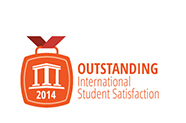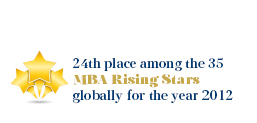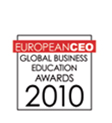
By Irene Daskalaki, Communications and Partnerships Expert at The World Bank, Luxembourg, MBA International Class of 2007
In late 2015, developing countries raised their ambitions for sustainable and inclusive growth by adopting the Sustainable Development Goals (SDGs), a collection of 17 global goals covering a broad range of social and economic development issues set by the United Nations.
In order to properly implement the SDGs, developing countries must make investments that surpass their own budgets and available donor funding (which tends to be primarily donor aid). The Goals carry a price tag of some $3.9 trillion annually for developing countries alone, with current available funding estimated as $1.4 trillion, leaving a gap of $2.5 trillion. As a result, the big question remains – What can be done in the development finance arena to fill this gap? The answer lays on the argument that developing countries must find new, innovative ways to access finance, especially from the private sector.
Multilateral Development Banks (MDBs), e.g., the World Bank Group, the European Investment Bank, the European Bank for Reconstruction and Development, etc., are at the center of this challenge, with the ability to take action and convene new and innovative collaborations. These institutions primarily serve government clients. However, there is an opportunity to engage with the philanthropic and private sectors of wealthier countries in order to tap into critical capital that can serve to innovate and “re-package” the traditional operations of development finance. MDBs have the network and infrastructure to foster innovative and effective partnerships that transcend traditional financing models and they are able to gather and convene other fellow actors representing the public, private and third sectors, as well as to leverage new sources of funding.
This novel approach is being promoted under the term Maximizing Finance for Development (MFD) and it entails leveraging the private sector in order to support developing countries’ development agenda by optimizing the use of scarce public resources. In theory, this new approach of blended finance makes sense. However, several challenges are presented. For MDBs to forge effective partnerships with private and philanthropic players, they will need to navigate an expanding and fragmented sector that constantly evolves, compete for resources with other development actors, and adapt their instruments and policies to these new partners.
The focus of these efforts is of course on lower income countries, and in order to be effective, MDB’s must target innovative financing while taking into consideration of the present reality. Most MDBs’ support involves constrained lending and grantmaking which has shown little effects. Furthermore, a lot of assistance provided from developed to developing countries is tied to conditionalities that are unrealistic in yielding positive results. Instead, they are associated to stringent austerity measures that compile large external debts and provide no benefits to social and environmental welfare. This reality becomes even more obscure when we realize that the shares of the extremely poor that live in conflict-affected countries is expected to increase to 60 per cent by 2030. These countries are unable to attract any private investment because of the associated risk; hence they depend exclusively on development aid.
MDB’s can play a vital role as strategic advisors and honest brokers by gathering all the various players (public and private) in order to bring about regulatory reforms, equip and mobilize resources for the poorest, as well as come up with schemes to guarantee exposure risk to private investors. This requires a coordinated, bottom-up approach in order to form public-private partnerships (PPP) where risk is shared accordingly. More specifically, this entails:
- Working with other fellow development organizations, such as the United Nations, the Organization for Economic Co-Operation and Development, in order to bring about change in the manner by which development assistance is conducted,
- Working with client and member governments in order to help them set the groundwork and develop the right regulatory frameworks that will serve to attract and sustain private sector investments, and
- Working with private and philanthropic partners, such as investment funds, corporates, and grantmaking organizations, in order to develop investment projects, new financial facilities, provide early-stage risk or capital, and to help realize and scale-up activities.
For example, the World Bank Group (WBG), one of the leading sources of financial and technical assistance around the world, implements the MFD approach via its five institutions – The International Finance Corporation (IFC) unlocks private investment and provides support on debt; the Multilateral Investment Guarantee Agency (MIGA) provides support with equity and guarantees to address investor risk; the International Bank for Reconstruction and Development (IBRD), which also includes the International Development Association (IDA), supports in setting the right regulatory frameworks and provides grants to the world’s poorest countries; and the International Center for Settlement of Investment Disputes (ICSD) resolves international disputes between investors and States.
The WBG is piloting the MFD approach in nine countries where clients have requested private sector solutions to advance critical development projects (Cameroon, Cote d’Ivoire, Egypt, Indonesia, Iraq, Jordan, Kenya, Nepal, and Vietnam), and it is facilitating high impact private sector investments in Lebanon, Sri Lanka, Kazakhstan, Bhutan, and Bangladesh. To support the MFD approach, the institution has developed specific diagnostic tools that help identify opportunities to maximize finance for priority investments and the relative actions needed to unlock those opportunities (in collaboration with client governments), work with all relevant stakeholders to assess investment challenges, and take investor perspectives in reviewing and identifying economic opportunities to encourage growth.
The institution will aim to work with private investors and help invest in emerging markets, in line with each investor’s strategic priorities and risk appetite, as well as offer a wide range of products and programs to mobilize resources from capital markets and risk mitigation instruments. This effort will be accomplished by supporting the institution’s work through capital market instruments (private investors can invest directly in the WBG’s work with developing countries), as well as creating investment opportunities in emerging markets (expanding the available channels to WBG).
In addition to the question of how the WBG can engage with private investors, it is essential to figure out how companies can engage with the institution? To this end, over recent years, WBG has made it easier and more attractive for private companies to do business in developing countries, for example by providing finance for companies by facilitating local-currency loans and a variety of other financing solutions—and by connecting them to institutional investors. WBG further helps companies navigate new environments and connect with local supply chains and communities. Lastly, it offers credit enhancement instruments, political risk insurance, and payment and loan guarantees. These can be part of a package helping projects and transactions unlock better opportunities for private investment.
Promoting innovation and entrepreneurship is another way the WBG supports companies, by helping build the capacity of promising companies in high growth sectors like agribusiness, information and communication technology, and clean technology. The institution helps them access seed capital and business know-how. IFC’s Venture Capital group invests in growth-stage companies that offer innovative technologies or business models geared at emerging markets; areas include health care, edu-tech, and e-commerce.
Lastly, companies can engage with the WBG via procurement business opportunities for goods, services and consulting services in its project portfolio. The institution finances over 1.700 investment projects in some 130 countries, in a wide range of industries and sectors. About 80 percent of total financing each year is in the transport, water & sanitation, and energy & extractives sectors. The WBG’s active project portfolio is worth about $80 billion, with annual procurement in project operations in the range of $20 billion. Companies interested in these opportunities can download the ‘World Bank Finances’ app and the ‘World Bank Procurement’ app, or visit ‘procurement’ page on the organization’s Website.















